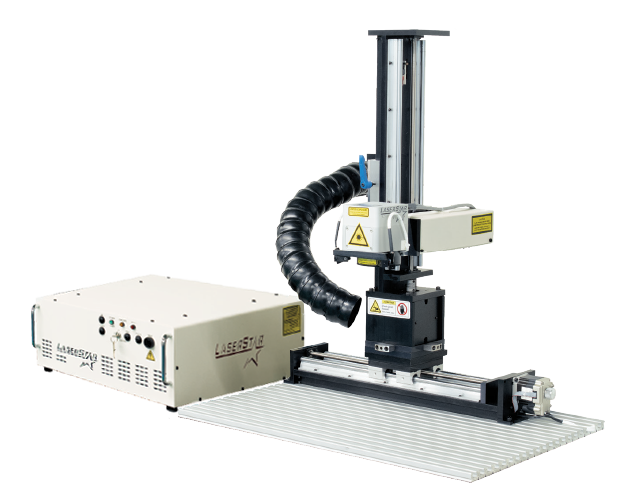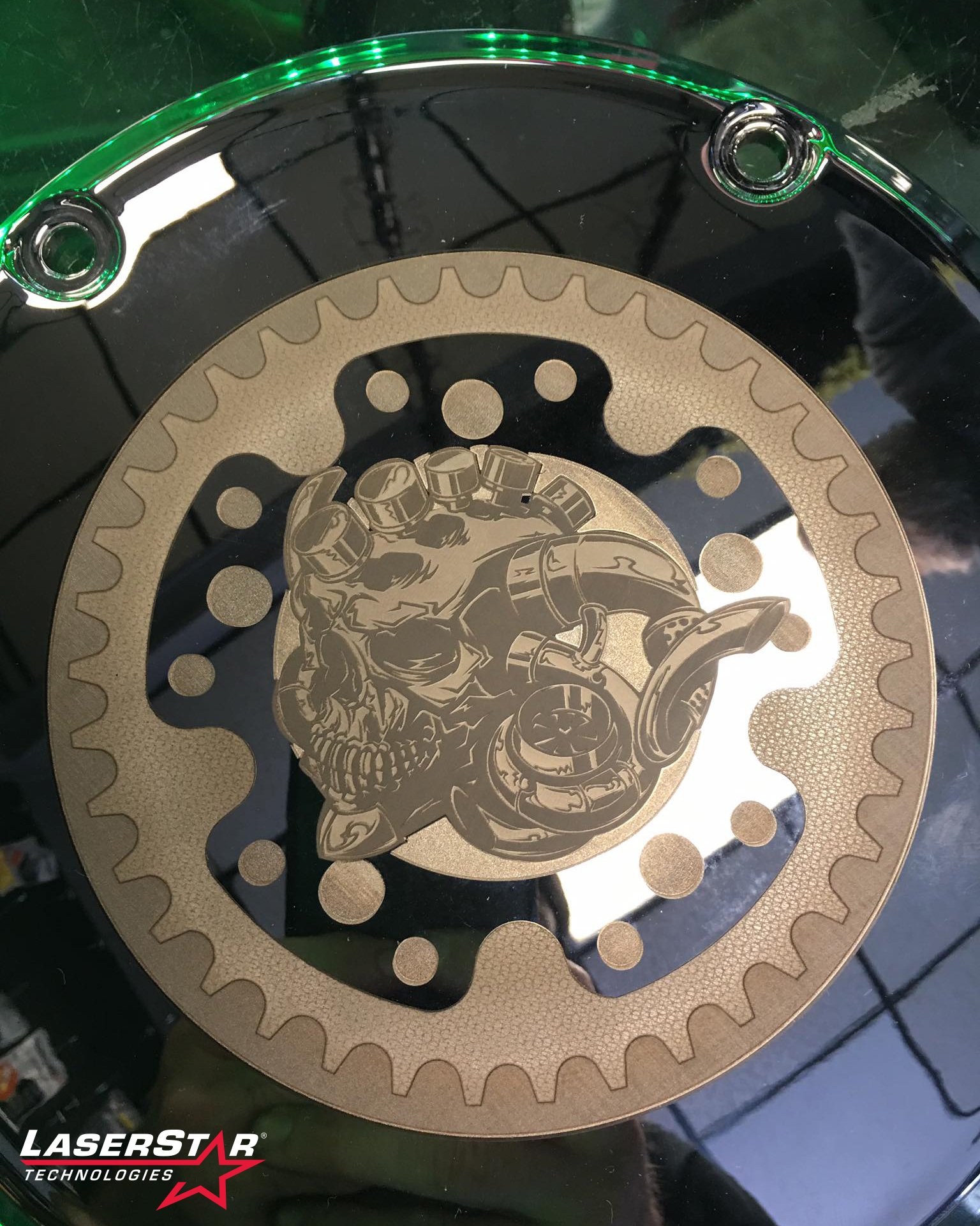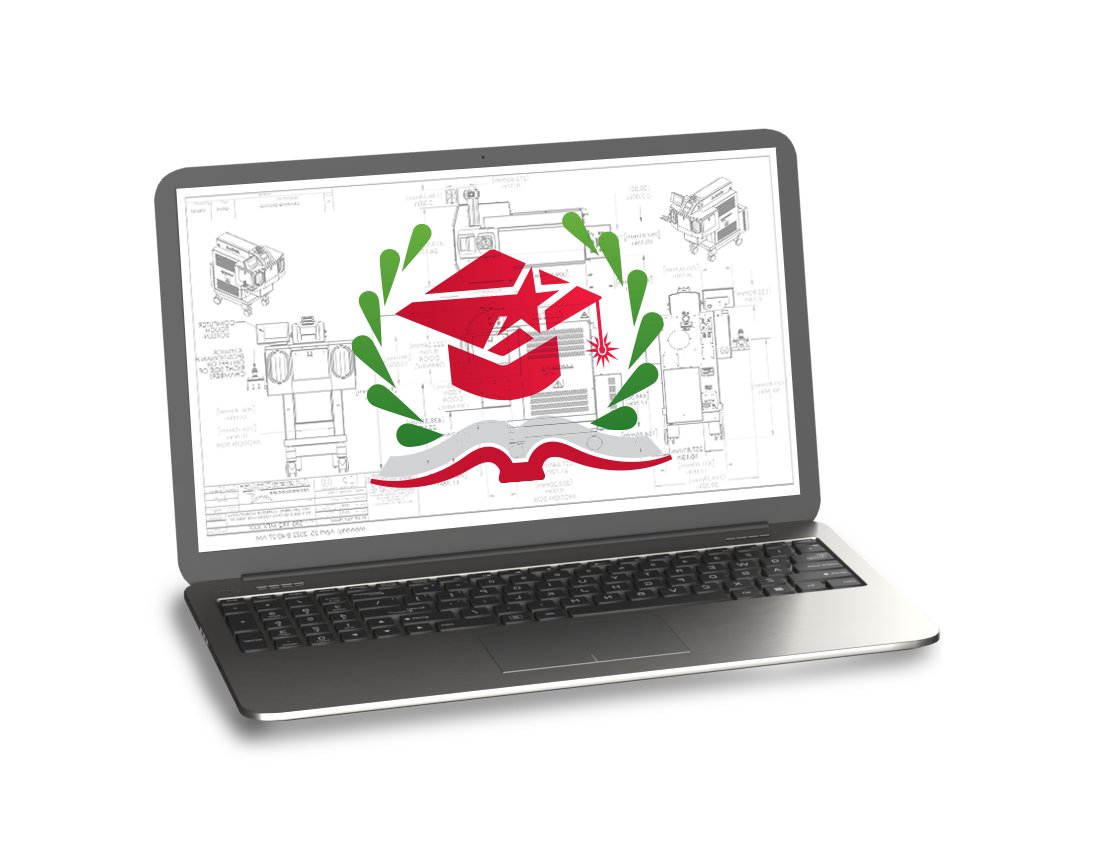
The first time we make a major purchase, one of the best things we can do is understand what we’re buying. We know the purpose of a car, but there are still choices and factors to consider before making a final purchase. Much like a car, a laser engraver or laser marker is a pretty big investment and though we know its purpose, there are other elements we need to think about.
Before leaping in and making that purchase, it’s a good idea to understand what you need to know and consider before you buy.
Quick Links
- What is Laser Engraving?
- Types of Laser Engravers
- What Materials Can Be Laser Engraved?
- Tips to Buying Your First Laser Engraver
What is Laser Engraving?
Laser engraving is the process by which technicians, craftspeople, and artisans can carve words, phrases, images, logos, and designs into various materials and objects such as jewelry, tactical gear, medical tools and devices, and more.
In the case of jewelry and tactical gear, laser engraving is typically used to enhance an existing piece. In many other industries, it’s used to permanently label parts and tools with logos, manufacturing information, regulatory IDs, QR codes, and more.
Types of Laser Engravers/Markers
The first and most important thing to know about laser engravers and markers is that they’re not all the same. As noted above, engravers and markers have different applications and so the products themselves are designed to meet the specific needs of the industries where they are employed.
First, you’ll want to consider the different types of laser available:
- Carbon Dioxide- By far, CO2 is the most common laser type and among the most versatile. For those reasons, it can be the best choice for a first time purchase. However, CO2 lasers are not great for metals, though they’re fantastic on other materials like wood, cloth, and more. For metal engraving, surfaces must first be treated with a metal marking agent.
- Fiber- Among the most powerful laser systems on the market, the high beam quality of a fiber laser makes it ideal for depth etching and engraving, especially on harder metals. It’s also perfect for small batches, cutting thin metal, and color marking.
- UV- Some surfaces and materials aren’t designed to handle heat at all, or heat can compromise the integrity of the material. UV light and lasers are often used on these materials, called cold marking. Materials required minimal to no heat include some plastics, ceramics, glass, solar panels, and electronics.
- Green- Working with highly reflective or sensitive materials? Then green lasers may be the route to take. They’re remarkably precise, capable of producing fonts less than 1mm with small widths of up to 10 µm, and are ideal for semiconductors, circuit boards, ceramics and surface coatings like epoxy.
- Mopa – Despite having been around for sometime, MOPA lasers, which are similar to fiber, just aren’t as popular. That may have to do with investments in the technology limiting its growth. However, because MOPA lasers produce less heat, there is in turn less melting and burning at the edges and less foaming on plastics. It’s versatile and capable of doing quite a bit, but MOPA lasers also come with a hefty price tag when costs are already a factor for most looking to buy.
Open Laser Marking and Engraving Systems
Open laser marking and engraving systems are designed to work in existing manufacturing spaces. Many have versatile footprints that enable them to fit right into a production line where they are capable of marking just about any industrial material with logos, symbols, bar codes, qr codes, and more. Further, many of these include the ability to laser cut foils and light gauge steel. These machines include:
FiberCube OEM 3300 Series Industrial Marking System
FiberCube Integrator Kit 3500 Series Industrial Marking System
FiberCube Marking and Engraving System 3601 Series Laser Marking System
FiberCube Open Laser Engraving System 3602 Series
FiberCube Open Laser Engraving System 3602 XL Series
Standalone Laser Engraving Systems
Standalone machines do not need production line integration and are suitable for both long and short run productions.They are multi-axis motion devices capable of meeting the widest range of applications.
High precision markings are possible on almost any type of material including gold, platinum, silver, brass, stainless steel, carbide, copper, titanium and aluminum, as well as a wide variety of medical-grade alloys and plastics. These laser engraving systems offer the speed, reliability and flexibility to meet both quality control and certification requirements.
FiberCube Jewelry Marking System Series 3800
FiberCube Industrial Marking System Series 3800
FiberCube Laser Marking & Engraving System Series 3801
FiberCube XL Laser Engraving System Series 3803
High Production Laser Marking & Engraving Systems
These solutions are robust, turnkey industrial laser marking platforms that offer the benefits of a non-contact, abrasion-resistant, permanent laser mark, laser engraving, or cut onto almost any type of material. They still provide the speed, reliability and flexibility required to meet stringent quality control and process certification standards.
FiberCube Industrial Laser Marking Tower Series 3805
FiberStar Rotary Dial Laser Marking Workstation Series 3806
While certainly not an exhaustive list, it’s important to recognize that there are options out there and understanding what you need for the projects and production you have in mind is an essential part of making your choice.
 What Materials Can Be Laser Engraved or Laser Marked?
What Materials Can Be Laser Engraved or Laser Marked?
When making a choice for your first laser engraver (or even an upgrade), one of the first questions in your decision making process is asking what materials you’ll need to be laser engraving or laser marking. However, many of laser markers and engravers are capable of handling a wide variety of materials including:
- Plastic materials including:
- Mobile phone keyboards
- Dashboards
- Illumination components for aerospace and automotive markets
- Precious metals including:
- Gold
- Platinum
- Silver
- Non-precious metals including:
- Steel
- Sterling silver
- Titanium
- Aluminum
- Brass
- Copper
- Alloys
While laser marking and laser engraving systems have incredible versatility when it comes to the materials you’re working with, understanding how to use your machine to get the response from the material you want is vital as is choosing the right laser system for your business.
Tips for Buying Your First Laser Engraver
Essentially, while laser marking and laser welding is always a similar process, in how it works, completing that process includes a lot of variables. When you consider the need for precision, accuracy, speed, consistency, durability, and cost, one of the best things you can do is make a very educated decision about which machine to purchase. While talking to a salesperson is always helpful and they can help guide you through the process, there’s a few things to consider.
- Consider your production needs- What are your production needs in terms of volume and time? What materials need engraving?
- Consider your limits- Do you need to retrofit a laser system into an existing production line? How much space do you have available in a work area or a production line? What electrical supply is available?
- Consider your product needs- When it comes to the final product, what factors are most important? Durability? Precision? Accuracy? Speed? Consistency? Versatility? Longevity?
- Consider the needs of the machine- We’ve already discussed electrical power, but most laser systems also need an exhaust or filtration system. You’ll need to look at those needs as well as space limitations as well.
- Considering buying used? – We get that budgets are an issue and there’s an appeal to buying used, especially one that’s been refurbished by a company. However, with your first laser engraver or marker you want the full support of the manufacturer and the best support and service are going to come from a new machine. Further, businesses selling new equipment means the business is, hopefully, investing in your ability to generate revenue quickly.
- Consider buying American- Like many products, the price tag from other countries might be lower, but what you save at the onset will cost you in the long run. In short, when you need support, service, and training, those will be far more difficult when you purchase from a foreign company.
Consider support and training– There are a lot of companies out there that sell laser engravers and laser markers. You want to make sure you’re choosing the right company which means one that service, support, and training are ongoing and readily available. Because your laser system should last more than a decade, consider a company who’s going to be there in 10 years, still working as your partner.
If you’re looking to buy your first laser engraver or laser marker, you might want to talk to some experts too. The team at LaserStar is ready to help you and answer any questions you may have. We’re invested in getting you the right machine as well as ensuring you’ve got the support and training you need to generate revenue quickly.
Get in touch with our team today and let’s start talking about how we can get you on the path to your first laser system.

 What Materials Can Be Laser Engraved or Laser Marked?
What Materials Can Be Laser Engraved or Laser Marked? Consider
Consider 


